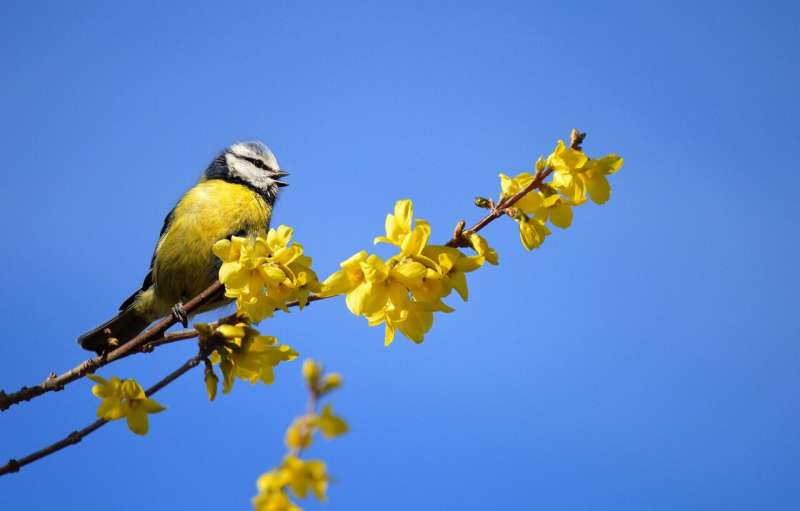This article has been reviewed according to Science X's editorial process and policies. Editors have highlighted the following attributes while ensuring the content's credibility:
fact-checked
peer-reviewed publication
trusted source
proofread
Blue tit population booms with moths on the menu: Study

The importance of moth caterpillars for common garden birds has been revealed in a new study. Researchers have found that years when moth numbers were up resulted in increased population growth for the blue tit.
The results, derived from 23 years worth of bird and insect population data, are published today in Ecology Letters.
Dr. Luke Evans, of the University of Reading, led the research. He said, "Insect abundance directly impacts songbird numbers from year to year. When moth caterpillars are large in number, blue tit parents can easily find food for their demanding chicks. When moth numbers crash it gets much harder for birds to find enough insects and raise as many young."
Dr. Malcom Burgess, of the Royal Society for the Protection of Birds (RSPB), who co-led the research, added, "It's important we understand the relationships between insects and birds to plan effective conservation measures given evidence of recent insect declines. Our study highlights the need to better manage habitats to support insects, as they are a vital food source sustaining many common garden birds such as the blue tit."
Winter moth diet
The team of researchers from the University of Reading, RSPB, and the University of Leeds combined data from two UK-wide insect and bird monitoring schemes—the Rothamsted Insect Survey and the Breeding Bird Survey. The Rothamsted survey has tracked moth populations using light traps since 1968, while the Breeding Bird Survey relies on volunteers counting birds annually across the UK. By linking the two datasets together, the research team was able to see how fluctuations in moth numbers influenced blue tit population changes over 23 years.
The results showed that blue tit populations grew more in years when moth numbers were higher, indicating that the abundance of moth caterpillars impacts blue tit breeding success. Among the moth species linked to blue tit success was the winter moth, which emerges early in spring and is known to be a key food source.
The study also found regional variation in important moth prey species for blue tits, suggesting that conservation efforts need to consider local differences. The researchers hope their approach combining insect and bird monitoring data could be applied to other species, helping to map food web relationships and identify vulnerable points across ecosystems.
More information: Population links between an insectivorous bird and moths disentangled through national scale monitoring data, Ecology Letters (2024). DOI: 10.1111/ele.14362
Journal information: Ecology Letters
Provided by University of Reading




















